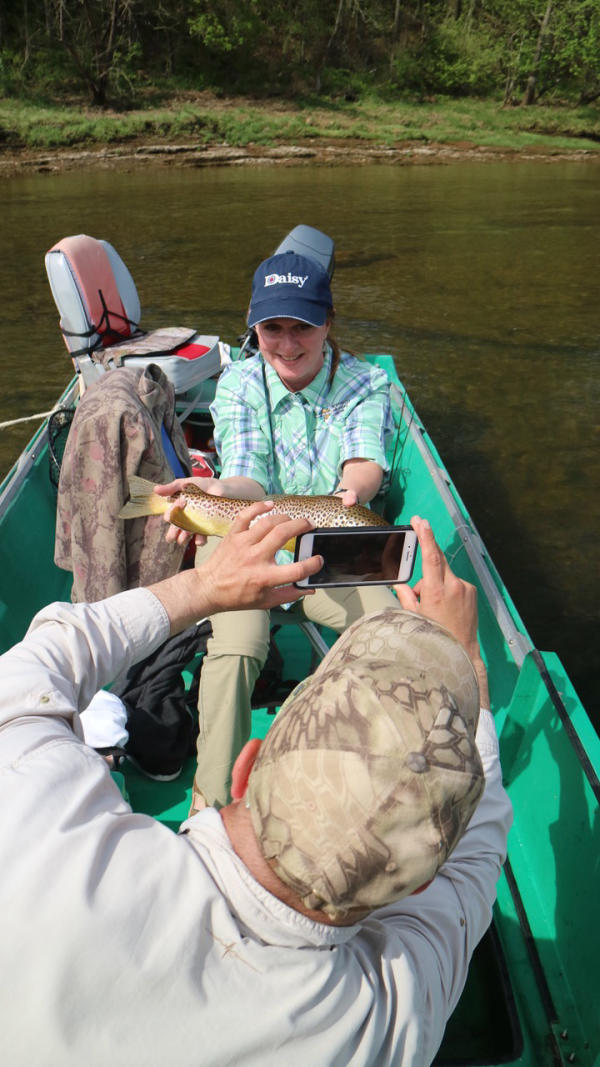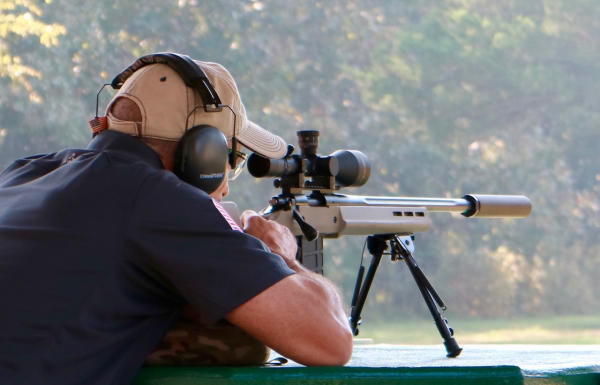Innovation has changed the outdoors, opening it to virtually anyone who wants to get outside. Innovation has made it possible for everyone, regardless of their physical issue, to enjoy the outdoors.
Today’s lighter/stronger/smarter equipment means a 40-pound pack could include enough high tech equipment to support a traveler in comfort for a ridiculously long time. With communications and navigation gear to keep in touch while knowing your location within a couple of feet virtually anywhere on planet earth.

Technology can do everything except catch fish. That's where you become the variable. OWDN photo.
|
In fishing, high-technology works to help you find fish.
Fishing from the bank? Just attach a remote fish finder to your line, cast it out and then check your wrist monitor to see what is lurking around under your finder. Heck, you can even use your navigable underwater camera to watch those fish if you’d like.
Your boat’s lighter, faster, stronger and more fuel-efficient. If your boat’s a kayak, you can pedal, paddle or power further and faster than ever before- and still add enough technology to be as well equipped as any boat that zips by.
Lures have the abilities to shake, rattle, roll, flash, and hum or smell to attract fish. And they’re so lifelike you’ll think they should be stored in a live-well.
Hunting has also added high-tech components.
Game cameras are digital -and will send you up-to-the-minute information on anything moving in your area - from multiple cameras via a central controller. Technology has also minimized math for those longer shots. Laser rangefinders can “talks” to scopes, make the corrections for round and distance; then illuminate your aiming point on the cross hairs.

Camping? No problem. A three-pound backpack will carry your tent, LED illumination, and solar battery chargers along with six to ten days worth of meals-and still stay under 30 pounds. If you're not a tent camper, you leave nothing behind except your neighbors in today's high-tech campers and land yachts.
Birders and wildlife observers have the option of using cameras and lenses, or moving to “digiscoping” mating ultra-clear spotting scopes to high-megapixel smart phones or camera bodies. They capture images - automatically geo-tagging them, then log them into their wildlife/birding logging records, and upload them for friends. All from the field.
As technology advances, only one item has stubbornly refused to cooperate with miniaturization: water.
Water still weighs the same per gallon it did when Lewis & Clark started their Western Expedition of Discovery in the 1700s. Only the containers have cooperated when it comes to lightening the load.
But technology helps there, too.
Today, you can stay hydrated using bladder that's accessible without taking off your pack, stopping your hike or disturbing anyone around you. Today’s bladders even help with cooling. When it runs low, stop at the first available water, drop in your purification pump and refill your backpack bladder - with safe, clean water.
But you’ll never be able to be a great shooter, angler or wildlife photographer without having a passion and putting in the practice necessary to make your gear perform. You can not buy a game - but you can step up your game with better gear.
And you can do that -even if you’re on a budget.
If dollars are a factor (and whose aren’t), consider buying the version just before the new-and-improved version we’ve just announced or reviewed. When new models are introduced, retailers -including online ones- generally drop the price on the earlier version. In some cases, that price drops precipitously. And let’s be honest, for a $150 savings, do you really care if the battery life is six or eight months? Take some of those savings and buy a couple of spare batteries and use the savings to use the gear more.
Many fashion-conscious shoppers regularly buy late-in-the-season and save big money.
If you’re an acquaintance of an early-adopter, make them a standing offer for the gear they upgrade. Use them as your test pilot.
And look around at what many of the best in their fields are using.
I'm not talking about the TV hosts or media types- we are plugged into the pipeline of new products. Telling you what’s new is a major part of what we do for a living.
Instead, look at what professional guides and outfitters use.
When they find the gear that fits their needs - they stop looking. They avoid “gee-whiz” technology because their gear has to perform (and they also realize some of their gear-head clients will show up with gadgets they can’t operate- so they’ll see it eventually.)
You're not apt to see a professional guide wearing the latest-and-greatest digital watch with time/temperature/barometric pressure/wind direction/and Horus bullet drop compensation or navigations. They’ll probably use a smart phone. They adapt add-ins that make the gear they already have even more useful. As one Texas guide explained to me, “apps don’t add ounces”.
But expect them to have the best rangefinders and optics they can afford. If it’s not top-of-the-top-of the line, they’ll probably explain that it’s the best suited for their needs. Being aware of what suits our need versus satisfying our wants can save lots of money.
Fishing guides have the latest technologies because you're paying them to catch fish. But much of their fishing tackle will be time-tested and well-maintained (another pro “secret” we frequently ignore - maintenance).
If you show up (I know) with a brand-new tackle bag chock-full of new-in-the-package lures and a fishing rod and reel that has never been dropped, dragged or drowned in the act of catching fish, you might find yourself getting some sideways glances from your experienced guide. Good guides will hand you one of their rods and say “try this”.
Listen to them. And don't worry, they've seen it all before. But new gear when you can’t tie a knot or bait a hook doesn’t impress them.
Ditto the hunting guide.
They're a little more inclined to want to "check the sight-in on your rifle" when you arrive if your gear looks a little too new. They might act like they’re ogling your new optic, but they must be darned certain that you're not a menace with a loaded gun.
Here’s the most valuable tip I can give you about new gear: if you aren’t certain how to run it, admit that before you head afield.
Telling them turns critics to instructors who want you to be successful. Your success reflects on their abilities. Sometimes talking is all it takes. They’re eager to help.
And remember, you can’t buy a game.
If you want to try a new outdoor activity, don’t be discouraged by the costs. You can still get into the activity affordably- if you’re willing to shop around - and realize you’re not going to get it right the first time.
Skill comes with time, practice and experience.
Start by renting or even borrowing gear if it’s an option. Take any suggestions offered about how to use the gear correctly. Then decide if it’s something you want to pursue.
Then get the best basic equipment you can afford- new or used. Upgrades will come as your skills improve.
At some point, you'll find "right" pieces of gear - won’t be eager to change.
When that happens, you’ll discover that you’ve also become proficient, whatever your game.
That should be the ultimate goal.
--Jim Shepherd